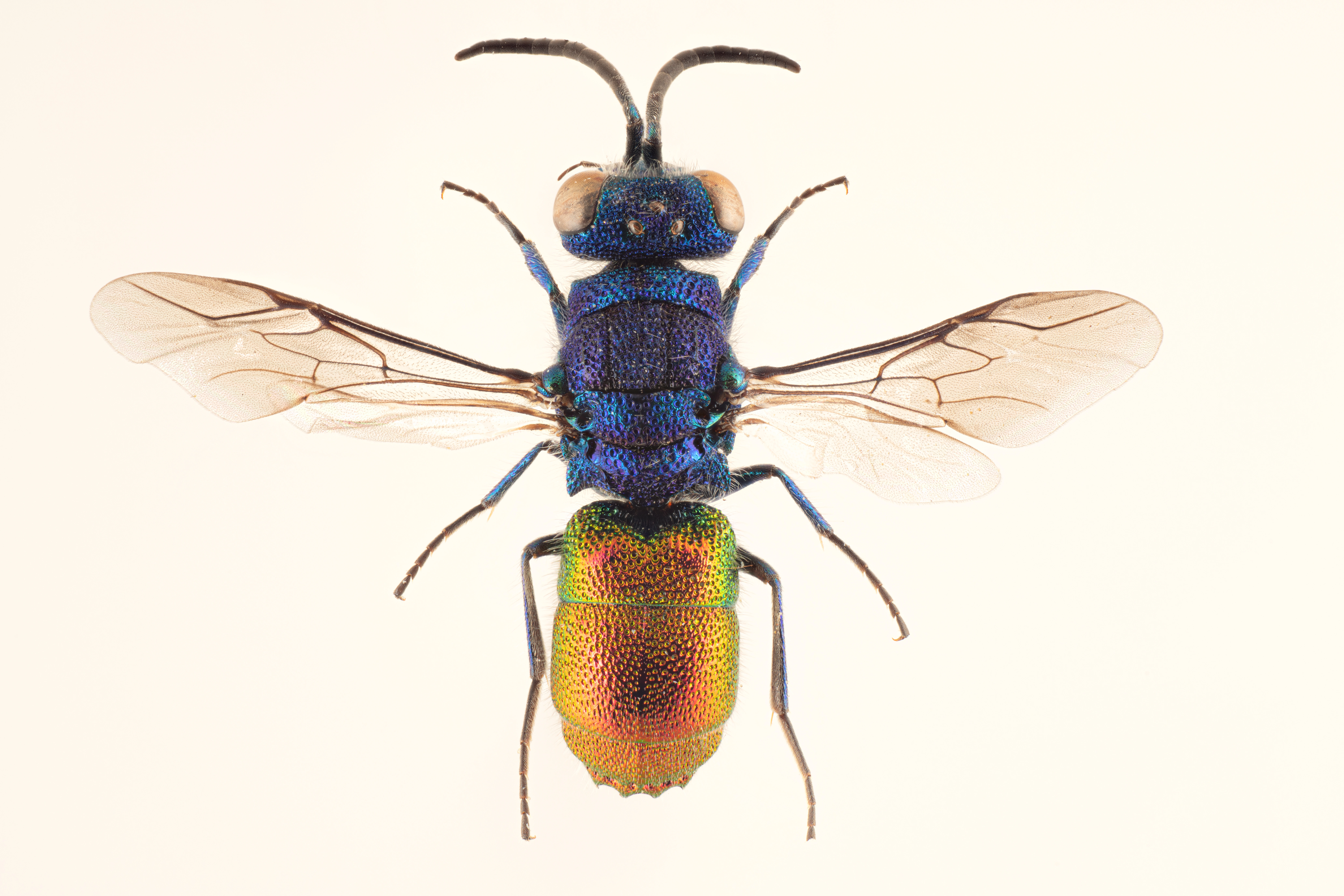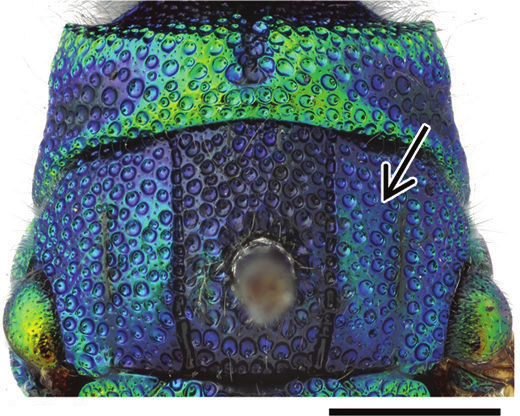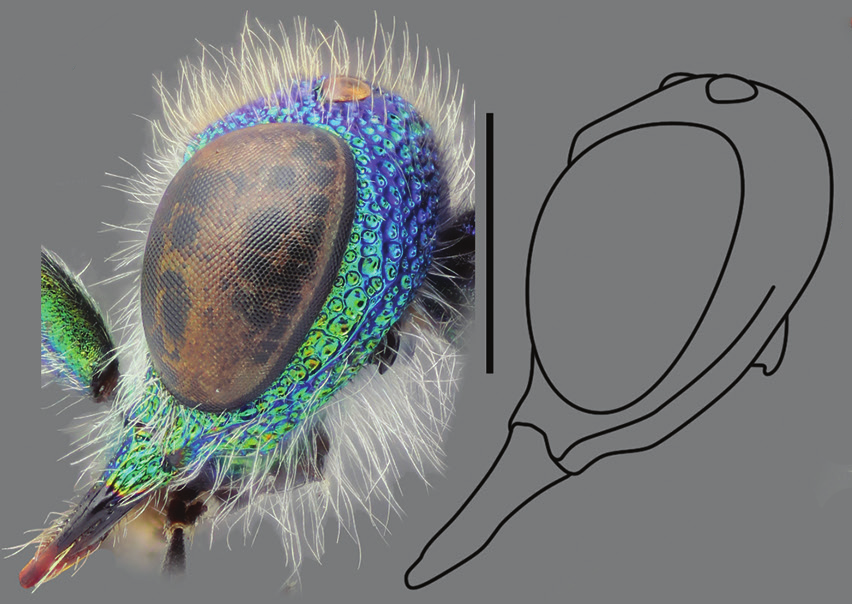Chrysis ignita
The name Chrysis ignita is often confused with several other species in the same genus. Recent studies based on DNA-barcoding reaveal that C. ignita is a rare species. For instance from Norway, there is only one known locality. Probably the species has declined all over the region. Hosts probably include Ancistrocerus parietum. The species is similar to C. terminata but the frontal carina is not forming tooth-like tubercles.
- Innhold
- Diagnosis
- Distribution
- Biology
- Remarks
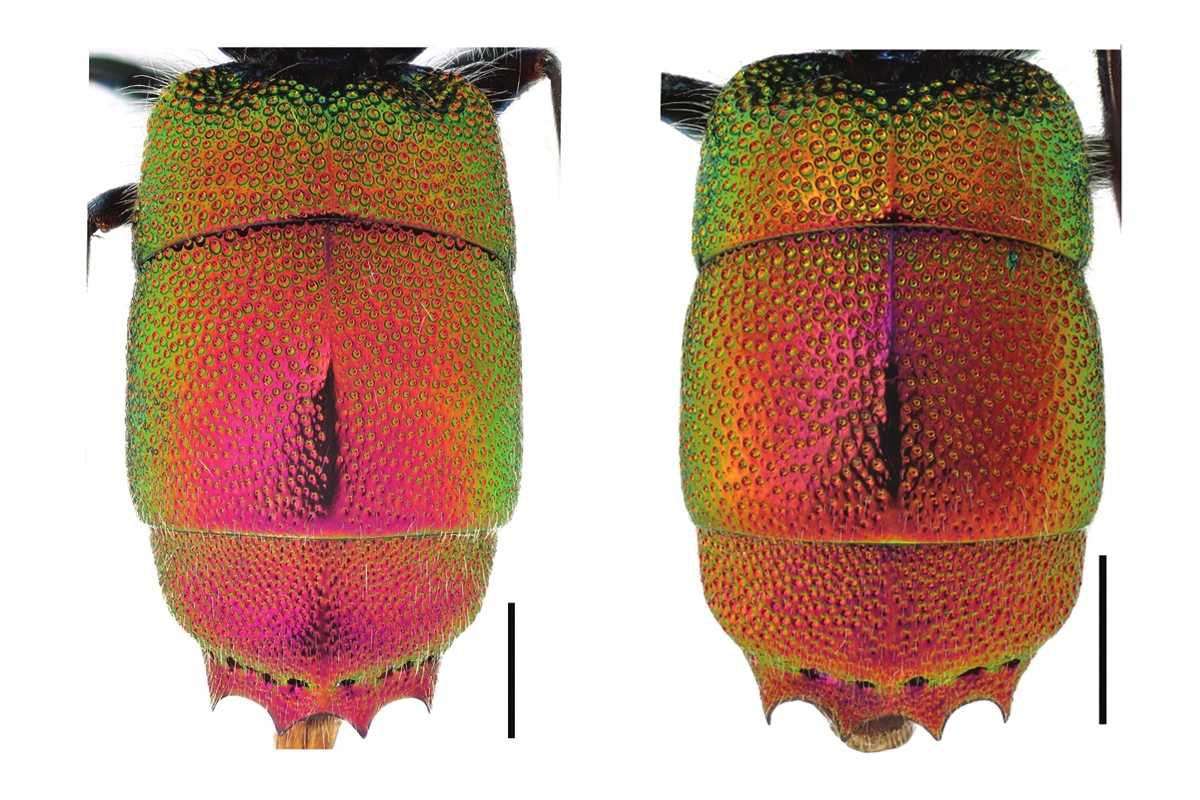
Figures 104 and 105
To the left: Metasoma, dorsal view: C. ignita ♀. Scale 1 mm. To the right: Metasoma, dorsal view: C. ignita ♂. Scale 1 mm.
Diagnosis
Figure 163
Pronotum and mesoscutum, dorsal view (arrow indicating lateral field of mesoscutum): C. ignita ♀. Scale 1 mm.
Length 5–10 mm.
C. ignita resembles closely C. terminata in colouration, structure and habitus, but the frontal carina is shallowly M-shaped or more or less arcuate (not forming four tooth-like tubercles). The head and mesosoma are dorsally shiny blue or violet with green reflections on the pronotum and mesoscutellum (Fig. 163). The punctures of the mesoscutum are of the same colour as the interstices (Fig. 163) (not lighter as in C. impressa). The tergites are golden red (Figs 104, 105), the sternites green or blue (Figs 122, 130) and the black spots of S2 are subrectangular in shape (Figs 120, 130). The punctation of T2 and T3 is coarse and regular (Figs 104, 105) and the apical teeth are sharply produced (Figs 104, 105). The medial furrow of the pronotum is narrow (Fig. 163) and the pubescence of the vertex is white (Fig. 147) or sometimes brown in the male.
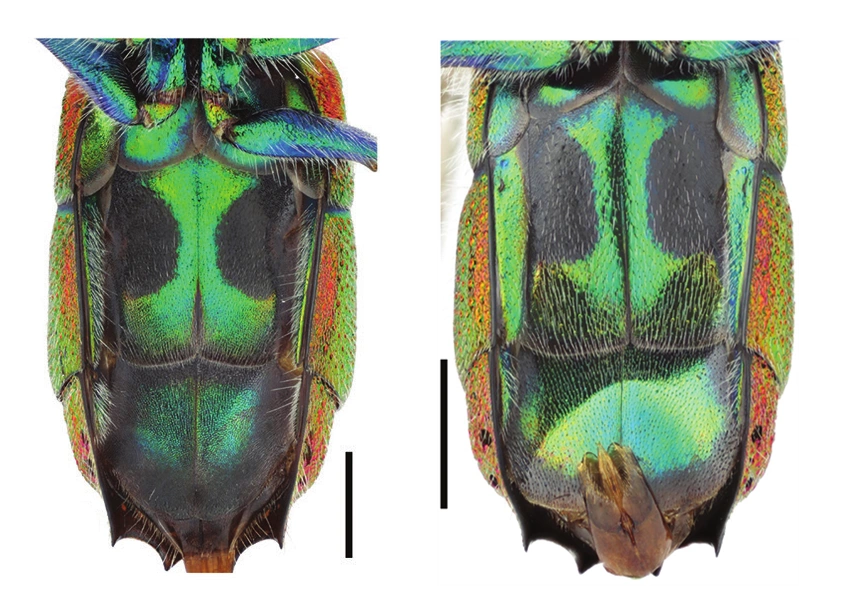
Figures 122 and 130
To the left: Metasoma, ventral view: C. ignita ♀. Scale 1 mm. To the right: Metasoma, ventral view: C. ignita ♂. Scale 1 mm.
Figure 147
Head, lateral view: C. ignita ♂. Scale 1 mm.
Distribution
Denmark, Estonia, Finland, Latvia, Lithuania, Norway, Sweden. Relatively rare.
West Palearctic: from western Europe to central Asia and China (Linsenmaier 1997, Rosa et al. 2014).
Be aware that the records present in the GBIF map may be misleading for some countries due to unrevised data sets or missing information.
GBIF Taxon: Chrysis ignita Linnaeus, 1761Biology
Habitat: gardens, parks and forest margins. Adults are usually collected from walls of old buildings (both wooden and stone), dead tree trunks, poles and log piles. They rarely visit flowers of Apiaceae (Rosa 2004).
Flight period: late May to early September.
Host: probably Ancistrocerus parietum (Linnaeus) (Vespidae) (our own obs.). Numerous host records have been published for C. ignita, but most of these are unreliable, due to inconsistent taxonomic treatment of the species.
Remarks
A few studied specimens from Norway, Finland and Lithuania differ significantly from other North European C. ignita specimens based on their mitochondrial DNA sequences. According to Soon et al. (2014), they could represent a cryptic species (“Chrysis sp.1”). No distinct morphological differences have been found between the two North European genetic forms.
